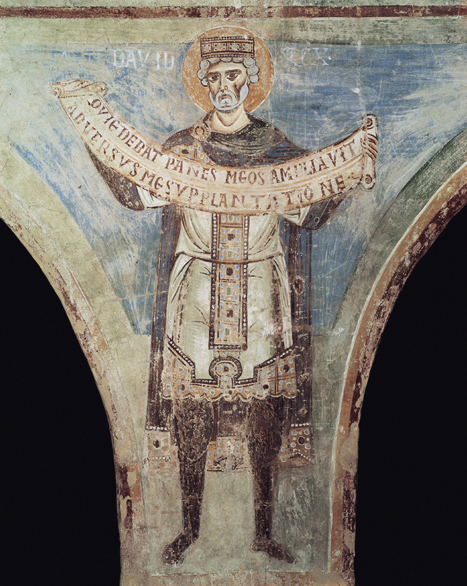Image Details

Scala/Art Resource, NY
King David, somber in his regal regalia, is depicted in this late-11th-century C.E. Romanesque fresco from the School of Cassino, in the Sant’ Angelo in Formis abbey, in Capua, Italy.
According to the biblical account, David conquered Jerusalem around 1000 B.C.E. and unified the Israelite tribes under his rule. In recent years, however, a number of “minimalist” scholars—who accept nothing in the Bible as factual that is not attested archaeologically—have made different claims. They suggest, among other things, that David is a mere fiction, a literary construct, or that he may have existed but the so-called United Monarchy is a figment of the imagination.
The “minimalists” point out that the books of Samuel and Kings were put into their final form in the sixth-fifth centuries B.C.E., several hundred years after David. But they go further: For the “minimalists,” the biblical texts were written without the benefit of reliable earlier sources, in order to create the myth of a glorious ancient Davidic monarchy.
For author Baruch Halpern, this position is too dismissive of the biblical text. Halpern points out that there is much impressive evidence confirming the historical reliability of the books of Samuel and Kings—not only the existence of Israelite kings as described in these books, but also the relative strengths and weaknesses of their kingdoms and those of foreign kings with whom they had contact (see the sidebar to this article).
